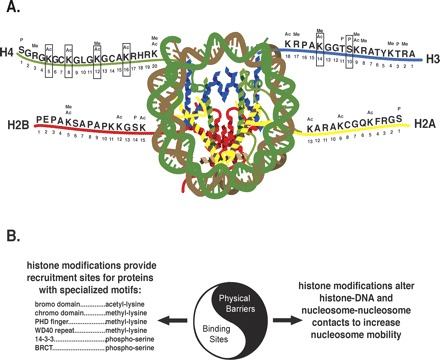Figure 1.

Modifications of residues on histone H4, H3, H2B, and H2A and their two main functions. (A) This schematic illustrates the basic repeating unit of chromatin, called the nucleosome, which is comprised of a histone octamer that interacts with ∼147 bp of genomic DNA per nucleosome. The histone octamer contains pairs of histone H4, H3, H2B, and H2A. The amino-terminal tails of these core histone proteins are the sites of numerous post-translational modifications (figure adapted from Luger et al. 1997 and Kouzarides 2007). Sites marked with a box are those that have been examined with regard to memory processes. (B) This schematic illustrates the two main functions these histone modifications are thought to perform. On the one hand, they are involved in relaxing physical restraints of compact chromatin structure. On the other hand, they provide docking and recruitment sites for additional factors that contain domains capable of binding specific histone modifications, such as the bromo and chromo domains, which bind acetylated lysines and methylated lysines, respectively.
